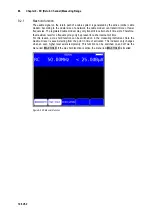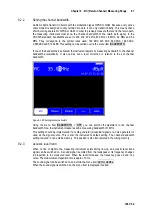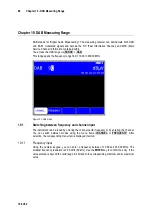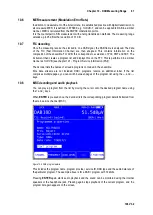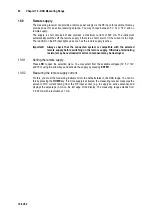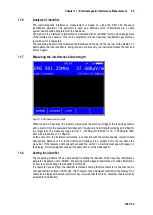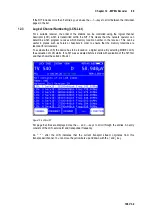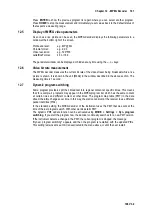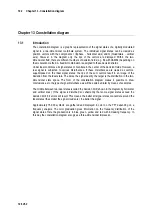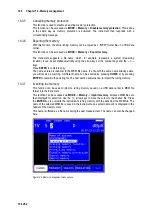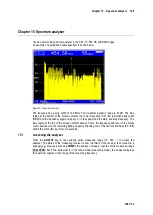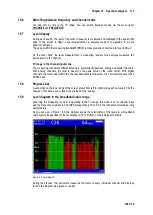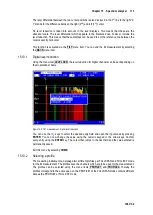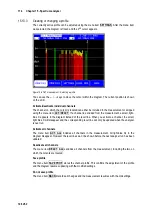
100 Chapter 12 - MPEG Decoder
106 V3.2
12.4
Picture and sound check
As described in the chapter 12.1 - Program Service Information (PSI), several video and audio
programs are transmitted in the same multiplex (TS). As soon as the MPEG decoder identifies a
TS, it analyses the PSI data and then generates the program lists. This process can be observed in
the MPEG area. The program list is displayed in this screen area once the decoder has finished
generating program lists. The illustration below shows a video program list.
Figure 12-5 DVB-C video program list
A list of video programs always appears first. The audio program list is displayed by pressing
MODE
->
AUDIO List
and data channels can be shown with
MODE
->
DATA List
.
Press
MODE
->
VIDEO List
list to return to the previous menu. All programs marked with * are
encrypted.
You can move the cursor within the program list to the required program by using the
↑/↓
arrow
keys. You can use the
←/→
keys to scroll between the pages of the program list.
Press the
ENTER
key to see further detailed information about this program. This information
includes the program name, provider, Service-ID, Transport-Stream-ID, Original-Network-ID and
the PIDs (packet identifiers) for the elementary text streams involved.
Many programs are broadcast with multiple audio streams, e.g. several languages. The desired
audio channel can be selected in the program details menu.
Start the program by pressing
ENTER
again. The video program is now being shown on the
screen. The measurement parameters are still displayed in a translucent manner in the upper area
of the screen. The sound from the loudspeaker can be monitored at the same time. The
measurement parameter area can be displayed or hidden any time using the
↑/↓
arrow keys.
NOTE:
With digital transmission, it is not possible to draw conclusions about
reception quality based on the quality of the picture and the sound. Picture and
sound quality are always perfect up to a certain transmission quality. Below
this point reproduction is no longer possible. It is only in a small transitional
area where the picture exhibits characteristic blocking (brick wall effect) and
the sound often stops. The broadcast quality can only be determined based on
the measurements (BER, MER).

